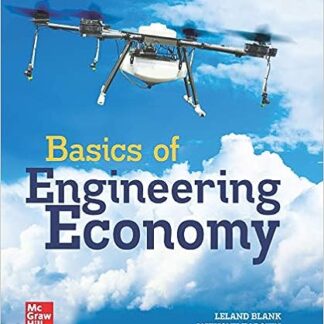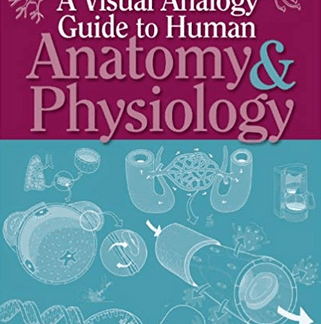Description
Counseling Strategies and Interventions for Professional Helpers 9th Edition by Sherry Cormier, ISBN-13: 978-0133905229
[PDF eBook eTextbook] – Available Instantly
- Publisher : Pearson; 9th edition (December 24, 2014)
- Language : English
- 288 pages
- ISBN-10 : 0133905225
- ISBN-13 : 978-0133905229
NOTE: This book is a standalone book and will not include any access codes.
A practical text that provides a look at basic helping skills used in a variety of disciplines and a number of issues common to helping relationships, processes, and interviews.
This pragmatic text describes basic helping skills used in a variety of disciplines, as well as a number of issues common to helping relationships, processes, and interviews. Suitable for both upper level undergraduate and entry level graduate students, the text focuses on skill acquisition, and includes a number of clinical cases and application exercises for promoting skill development.
The new Ninth Edition features a brand new expanded section on the basic helping skills (attending, listening, and action), as well as an additional new chapter contributed by Dr. Beth Robinson, Acadia University, on professional development and issues facing new helpers. Additional content new to this edition covers counseling in military settings, communication with LGBTQ clients, communication with immigrant and refugee clients, assessment of key components of client problems, SMART goals, and mindfulness interventions.
Table of Contents:
- About the Author
- Brief Contents
- Contents
- Application Exercises
- Preface
- New to This Edition
- Overview of the Book
- Instructor Supplements
- CHAPTER 1 The Helping Professions
- What Is Helping?
- Helping Conditions
- What Do Professional Helpers Do?
- Settings in Which helpers Work
- School Settings
- Higher Education Settings
- Community Settings
- Religious Settings
- Industrial and Employment Settings
- Health Care and Rehabilitation Settings
- Military Settings
- Helper Qualities and Skills
- Virtue
- Cultural Competence
- Neural Integration and Mindful Awareness
- Resiliency
- Training And Credentialing of Professional Helpers
- Training
- Credentialing
- Summary
- Reflective Questions
- MyCounselingLab
- Recommended Readings
- CHAPTER 2 The Helping Relationship
- The Importance of the Relationship to Clients
- Accurate Empathy
- The Brain Connection and Empathy
- Empathy and Mindfulness
- Cultural and Relational Empathy
- A. Hearing and Verbalizing Client Concerns
- B. Understanding Client Concerns
- C. Cultural and Relational Empathy
- Shame and the Empathy Bond
- Positive Regard
- Positive Regard and the Acceptance Therapies
- Motivational Interviewing
- Acceptance and Commitment Therapy
- Dialectical Behavior Therapy
- A. Overcoming Barriers to Positive Regard and Acceptance
- B. Expressing Positive Regard and Acceptance
- Congruence (Genuineness)
- Steps in Congruence: Awareness and Discernment
- Self-Disclosure
- Checkup
- Sharing and Feedback Statements
- Positive feedback statements: Encouragement and strengths perspective
- A. Characteristics of Feedback
- B. Positive Feedback Statements and Focusing on Strengths
- A Climate of Safety
- Summary
- Reflective Questions
- MyCounselingLab
- Recommended Readings
- CHAPTER 3 Communication Patterns in the Helping Process
- Ritualized Patterns of Communication
- Ritualized Helper Patterns
- Ritualized Client Patterns
- Interactive Communication Patterns across Diverse Client Groups
- Communication and Race and Ethnicity
- Implications for Practice
- Communication and Gender
- Implications for Practice
- Communication with Lesbian, Gay, Bisexual, Transgender, and Questioning Clients
- Implications for Practice
- Communication with Clients with Disabilities
- Implications for Practice
- Communication with Clients Who Are Immigrants or Refugees
- Implications for Practice
- A. Race and Ethnicity
- B. Gender
- C. Sexual Orientation and Gender Identity
- D. Clients with Disabilities
- E. Immigrant and Refugee Clients
- Silence
- Types of Silence
- Helper-Induced Silence
- Client-Induced Silence
- Therapeutic Silence
- Pacing the Helping Session
- Silent Focusing
- Responding to Defenses
- Silent Caring
- Guidelines for Using Silence
- Summary
- Reflective Questions
- MyCounselingLab
- Recommended Readings
- CHAPTER 4 Attending Skills
- Communication of Attentiveness
- Facial Expressions
- Animation.
- Eye Contact
- A. Facial Attentiveness
- B. Recognizing Facial Cues
- Body Positions and Use of Space
- Visible Behavior
- Verbal Following Behavior and Selective Attention
- A. Role Play of Verbal Following
- B. Verbal Following and Shifts in Focus
- Feedback: Part B
- Cognitive and Affective Messages and Differentiation
- Effects of Responding to Cognitive Content
- Feedback
- Types of Affective Messages
- Positive Affect—Joy
- Anger
- Fear
- Sadness
- A. Identifying Nonverbal Affect Cues
- B. Linking Body Cues and Emotions
- C. Identifying Verbal Affect Cues
- D. Identifying Affective Components
- Client Statements
- Feedback: Part D
- Effects of Responding to Affective messages
- Attending to Context
- Case Example: Listening for Context
- Summary
- Reflective Questions
- MyCounselingLab
- Recommended Readings
- CHAPTER 5 Listening Skills
- Paraphrase: Listening for Content
- Feedback
- Reflection of Feelings: Listening for Affect
- Feedback
- Summarization: Listening for Multiple Elements of Content and Affect
- Summarization of Content Response
- Feedback
- Summarization of Feelings Response
- Feedback
- Combining the Two Summarization Responses to Multiple Client Messages
- Feedback
- Putting it all Together: Using Listening Skills in a Helping Interview
- Obstacles to Listening
- Summary
- Reflective Questions
- MyCounselingLab
- Recommended Readings
- CHAPTER 6 Action Skills
- Questions
- Feedback
- Reflection of Meaning Response
- Feedback
- Challenging Responses
- Feedback
- Summary
- Reflective Questions
- MyCounselingLab
- Recommended Readings
- CHAPTER 7 Managing the Helping Session
- The First Interview
- Cultural Variables and the First Interview
- Structuring of Initial Moments
- Informed Consent
- Confidentiality
- Timing of Confidentiality
- Privacy Requirements
- Encouraging the Client to Talk
- Unstructured Invitations
- Open-Ended and closed Questions
- Client Reactions to Initial Interviews
- Intake Interview Content
- Using Intake Interview Information
- Handling Subsequent Interviews
- Terminating the Interview
- Other Termination Strategies
- Boundary Issues in Terminating an Interview
- Opening the Interview
- Terminating the Interview
- Terminating the Helping Relationship
- When Should Termination Occur?
- Preparing Clients for Termination
- Cultural Variables and Termination
- Introducing Termination
- Challenges to Termination
- Ethical Issues in Termination
- Summary
- Reflective Questions
- MyCounselingLab
- Recommended Readings
- CHAPTER 8 Conceptualizing Client Issues and Setting Change Goals
- The Client’s World and unmet needs
- The Role of the Helper in Assessing Client Concerns
- Assessing Key Components of Client Issues
- Assessing Key Components of Client Issues: The Case of Manace
- Case Example: Manace
- Process and Outcome Goals
- Culturally Appropriate Helping Goals
- Elements of effective Outcome Goals: SMART GOALS
- Translating Vague Concerns Into Specific Goals: Subgoals
- Outcome Goal I
- Outcome Goal II
- Client Resistance to Goal Setting and the Stages of Change Model
- Client Participation in Goal Setting
- Summary
- Reflective Questions
- MyCounselingLab
- Recommended Readings
- CHAPTER 9 Using Integrative Helping Strategies and Interventions
- Working With Client Feelings
- Identifying and Assessing Feelings: Awareness of Feelings Interventions
- Verbal Leads
- Emotion Logs
- Eliciting and Expressing Feelings: Expression of Feelings Interventions
- Increasing Body Awareness of Feelings
- Breathing
- Incomplete Sentences
- Understanding and Regulating Feelings: Reflection and Regulation Interventions
- Emotion Diaries
- Affect Regulation: Dealing with Difficult Emotions
- Working With Client Behaviors
- Behavioral Skills Training
- Social Modeling
- Behavior Rehearsal
- Feedback
- Self-Management
- Self-Monitoring
- Exposure Strategies
- Imaginal and In Vivo Exposure
- Brief Exposure
- Prolonged Exposure
- Working With Client Beliefs and Thoughts
- A-B-C-D-E Analysis
- Cognitive Restructuring
- Working With Client Language, Symbolic Meaning, and Stories
- Acceptance and Commitment Therapy Strategies
- Defusion
- Experiential Avoidance
- Values and Commitment
- Mindfulness
- Psychoeducation
- Instruction in Techniques
- Homework and Practice
- Narrative Therapy Interventions
- Externalizing Questions
- Questions of Unique Outcomes
- Narrative Strategies to Promote Gains in Well-Being
- Narrative Strategies to Promote Cultural and Racial Dialogues
- Working With Client Interactional Patterns and Relationships
- Reenactment of Interactional Patterns in the Helping Process
- Moving Toward Others
- Moving Away From Others
- Moving Against Others
- Interpersonal Tests of Helpers
- Interpersonal Therapy
- Interpersonal Disputes
- Role Transitions
- Interpersonal Deficits
- Working With Client Cultural and Social Systems
- Interventions to Promote Freedom from Oppression: Precursors to Change and Cognitive Challenges
- The Community Genogram
- Family Genograms
- Ecomaps
- Helping Roles and Indigenous Practices
- Case 1
- Probable Outcome Goals
- Possible Helping Strategies
- Case 2
- Probable Outcome Goals
- Possible Helping Strategies
- Case 3
- Probable Outcome Goals
- Possible Helping Strategies
- Summary
- Reflective Questions
- MyCounselingLab
- Recommended Readings
- CHAPTER 10 Considerations and Challenges for Beginning Helpers
- Professional Identity
- Establishing a Sense of Self as a Helping Professional
- Imposter Phenomenon
- Clinical Supervision
- Seeking Clinical Supervision
- Peer Supervision
- Offering Supervision
- Networking
- Professional Affiliation and Credentialing
- Membership in Professional Associations
- Professional Volunteerism
- Professional Certification and Credentialing
- Professional Development
- Professional Development of Self
- Professional Development of Peers
- Ethical and Legal Issues
- Boundaries of Competence and Referrals
- Informed Consent
- Privacy, Confidentiality, and Privilege
- Relational Boundaries: Multiple and Nonprofessional Relationships
- Discrepancies between Ethics Codes and Workplace Policies
- Ethics and Multicultural Issues
- Ethical Concerns about Another Helping Professional
- Ethical Decision Making
- Ethical Consultation across the Career Span
- Resources
- Rewards
- Self-Care
- Summary
- Reflective Questions
- MyCounselingLab
- Recommended Readings
- APPENDIX A Websites for the Ethical Codes and Related Standards of Professional Organizations for the Helping Professions
- APPENDIX B Counseling Strategies Checklist
- How to Use The Counseling Strategies Checklist
- References
- Index
Sherry Cormier is Professor Emerita in the Department of Counseling, Rehabilitation Counseling, and Counseling Psychology at West Virginia University, a licensed psychologist, and a long-standing member of the American Counseling Association and the American Psychological Association. Her areas of specialty include counseling women, health and wellness, clinical supervision, and counseling skills and interventions. She is also the author of The Professional Counselor with Harold Hackney. She currently resides in the state of MD where she enjoys beachcombing, boating, hiking, and biking.
What makes us different?
• Instant Download
• Always Competitive Pricing
• 100% Privacy
• FREE Sample Available
• 24-7 LIVE Customer Support






















